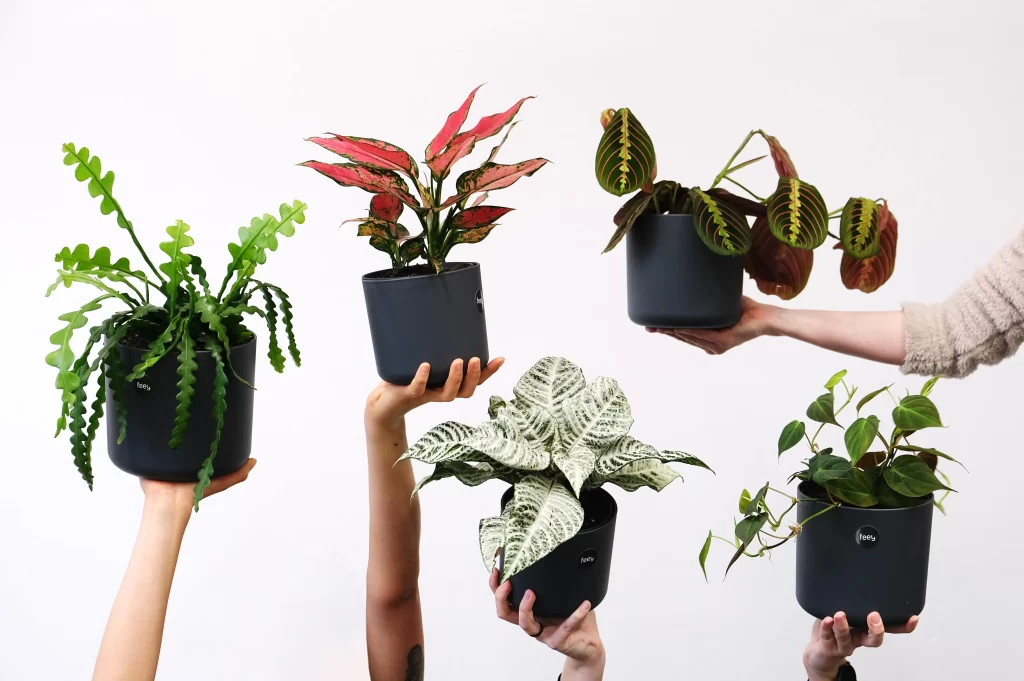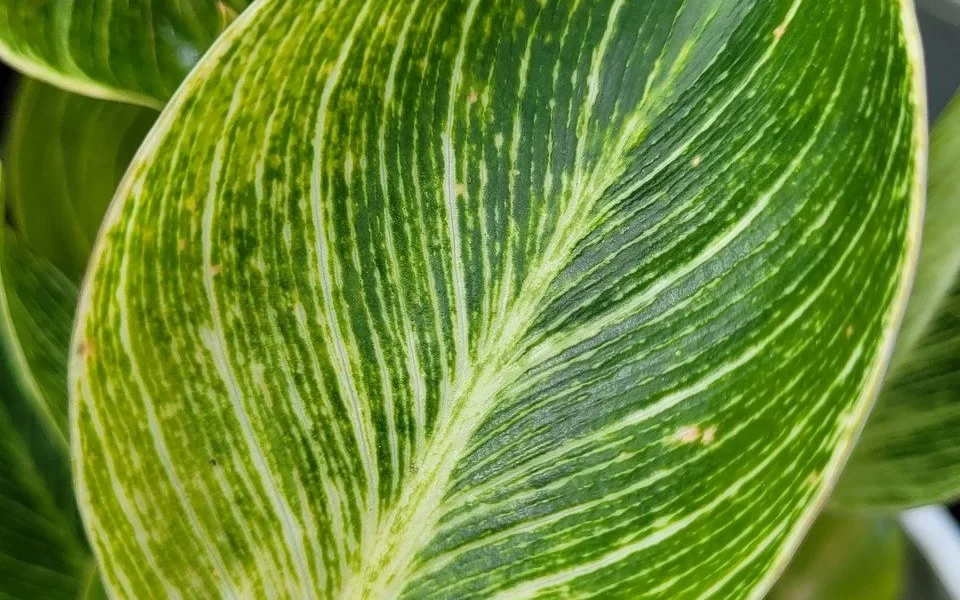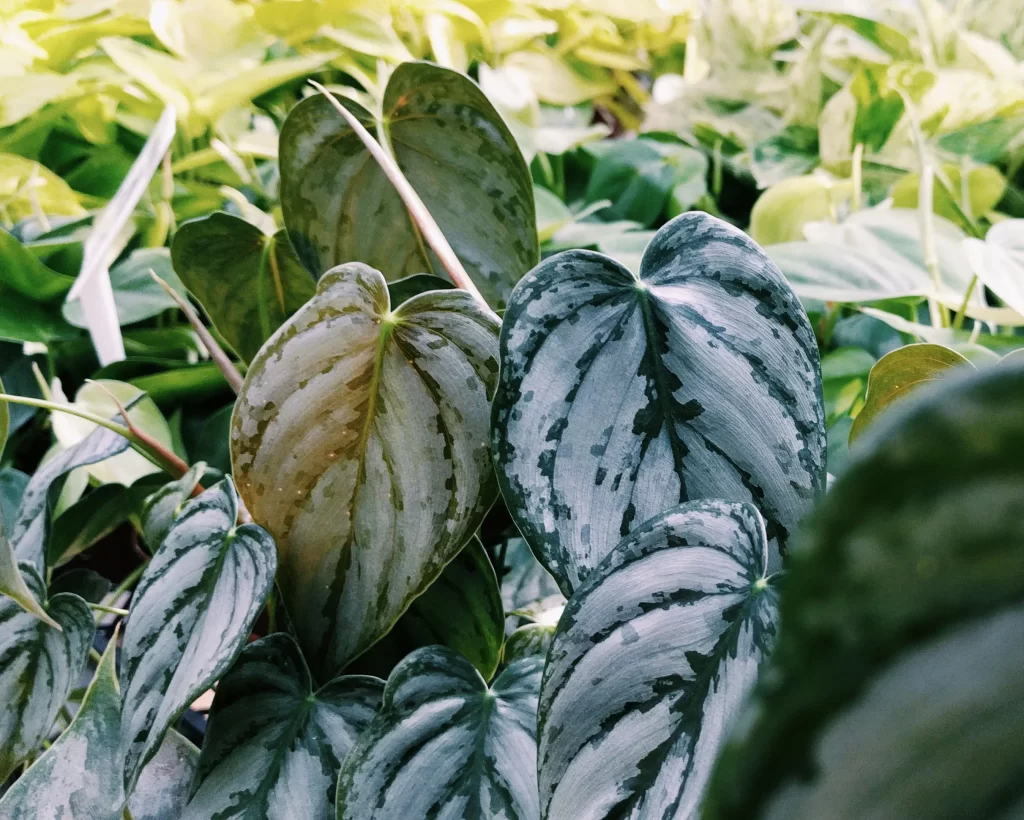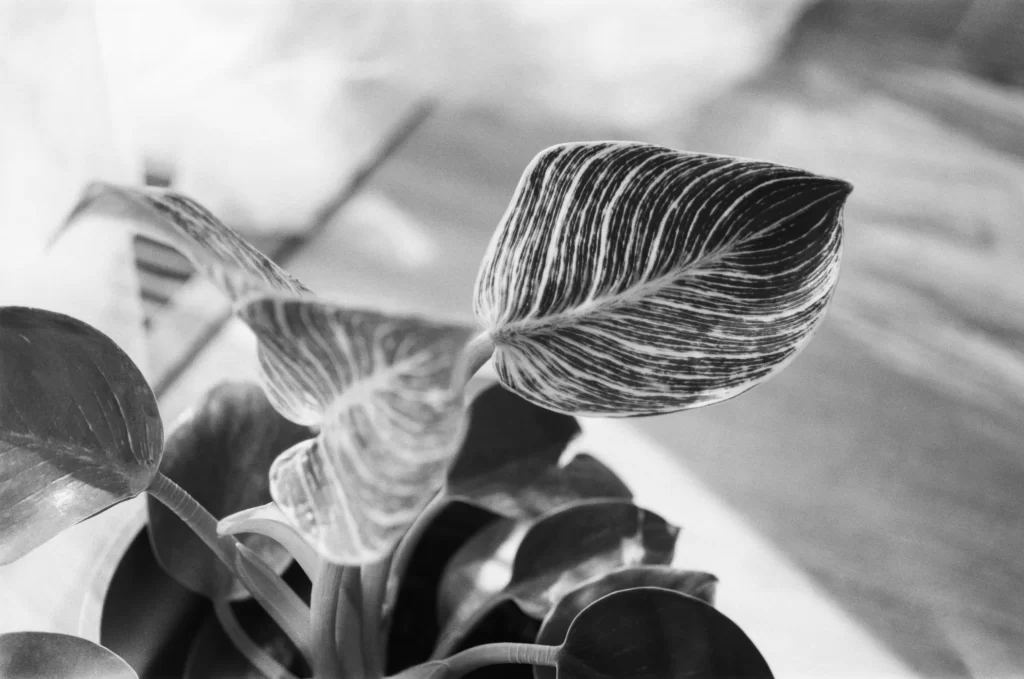Philodendron belongs to the family Araceae, native to the West Indies and the Americas. With over 500 species, Philodendrons have a wide range of leaf shapes, sizes, and colors and can grow in various ways.

Philodendron birkin is a beautiful plant whose heart-shaped leaves feature thin, alternating stripes of green and white. This species cannot climb and is easily recognizable due to its glossy green leaves with striking white pinstripes, making it stand out indoors. As a member of the Araceae plant family, it is a slow-growing tropical plant that thrives in warm and humid indoor conditions. Birkin, a cultivar’s mutant form that was once rare and expensive, is now more readily available. Variegation can be unstable, causing leaves to display a range of color variations on the same plant. Following are the highlighted features of Philodendron birkin:
| Features | Details |
| Leaf Characteristics | Small, pointed, matte dark green leaves; veins become whiter with age; mature leaves can be predominantly white. |
| Flower | None. |
| Native to | South America |
| Growth Rate | Slower than other Philodendron species |
| Size (Young) | Height: 15 cm, Width: 10 cm. |
| Size (Adult) | Height: >100 cm, Width: <70 cm. |
Read: Types of Philodendron: Exploring Diverse Varieties
Philodendron Birkin Plant Generic Requirements
The ‘Philodendron Birkin’ starts with small, pointed, matte dark green leaves that develop slightly whiter veins as the plant ages. In mature plants, the leaves can become predominantly white. When small, it measures 15 cm tall and 10 cm broad. The following are the generic requirements needed to cultivate a Philodendron:
| Philodendron birkin Plant | Requirements |
| Light | Prefers bright indirect light; avoid too much direct sun. |
| Water | Likes moist soil; reduces watering in winter; avoids soggy soil. |
| Fertilizer | Monthly feeding with diluted, balanced fertilizer; prevent salt buildup. |
| Growth | Slow–growing; suitable for desks or tabletops when young; matures to 3 feet. |
| Hardiness | Zone 11 Annual; bring inside when temperatures fall below 50 degrees. |
| Foliage | Large, dark green leaves with creamy white streaks; each leaf is unique[1]Philodendron birkin Requirements. Read. |

Philodendron ‘Birkin’ Cultivation Tips
Temperature, Light, and Humidity
It flourishes in temperatures with tolerances of 30°C max and 15°C min day and night, respectively. Indirect sunlight to partial shade is ideal. Maintaining a humidity level between 60-80% day and night contributes to its well-being.
Watering and Soil
There is no need to water this plant for several weeks. Keep it watered until the soil dries completely, and do not overwater it. Providing breathable substrate and keeping the ground moist but not waterlogged. Use a free-draining mixture to ensure the plant is not left in water. The soil should have a pH between 5 and 8, predominantly peat-based.
Fertilization and Maintenance
During the growing season, apply a mild fertilizer to enhance the white patterns on the leaves. During Spring and Summer, fertilize Philodendron Birkin once or twice a year with a houseplant-specific fertilizer. However, it is a low-maintenance plant, allowing for periodic pruning. Repotting is recommended every two years.
Bonus Growth Tip
Birkin grows at a relatively slow pace; be patient. Wipe leaves monthly to prevent dust accumulation[2]Philodendron birkin Care Guide. Read.
Philodendron Birkin Propagation
To propagate Philodendron ‘Birkin’, cut a healthy stem below a node and remove excess leaves, leaving a few at the top. Place the cutting in water or a moist, well-draining potting mix until roots develop. Transplant it into a container and provide indirect light, moderate humidity, and sparing water until it establishes.
Read: Lemon Lime Philodendron – Propagation, Care, and Benefits

Investigating Leaf Symptoms
If the leaves of your plant are curling and the potting mix is dry, it needs more water. On the other hand, if the stems feel mushy, you may be overwatering, leading to root rot. Adjusting your watering and light can enhance a plant’s survival chances. Here’s the following decoding of the leaf signs that should be considered:
| Symptom | Possible Issue |
| Curling leaves, dry potting mix | Thirsty plant, underwatered |
| Mushy stems, wet potting mix | Root rot, overwatered |
| Loss of variegation on new growth | Low light |

Read: Does Pothos leave turning yellow? 10+ Reasons and Solutions
Toxicity of Philodendron
Philodendron ‘Birkin’ contains calcium oxalate crystals, which can be toxic if ingested. It may cause irritation, swelling, and discomfort if contact occurs with skin or mucous membranes. Keeping this plant out of reach of children and household animal companions is advisable.
Read: Philodendron erubescens – Characteristics, Toxicity, and Benefits
Conclusion
Philodendron ‘Birkin’ features dark green leaves turning whiter with age. Ideal as an indoor foliage plant, it prefers indirect light, moderate watering, and, from time to time, mild fertilizer. With a slow growth rate, it reaches over 100 cm. This article has demonstrated Philodendron birkin, its features, plant care guide, and decoding leaf symptoms.



